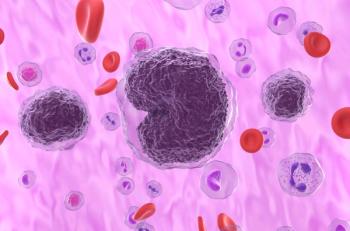
CBT Reduced Pain Intensity in Disadvantaged Patients, Study Finds
Learn About My Pain (LAMP), a recent study published in Annals of Internal Medicine that evaluated the efficacy of simplified group cognitive behavioral therapy (CBT) versus group pain education (EDU) and usual care in a disadvantaged population, was found to be effective. Researchers found that in general, both CBT and EDU, but not usual care, were associated with statistically significant improvements in pain intensity.
Chronic pain, defined as pain lasting beyond the course of an illness or injury for 3 to 6 months, affects more than 116 million Americans, costing $600 billion annually, according to a report from the National Academy of Medicine.1
Additionally, chronic pain disproportionately affects economically disadvantaged persons, ethnic minority groups, women, and older adults. Learn About My Pain (LAMP)2 is a recent study published in Annals of Internal Medicine that looked to evaluate the efficacy of simplified group cognitive behavioral therapy (CBT) versus group pain education (EDU) and usual care.
The study was comprised of 290 participants in a 3-group parallel randomized controlled trial. Patients were recruited from September 2013 to December 2015. In order to address the demographics that chronic pain affects the most, researchers recruited participants that were, on average:
- Aged 51.6 years
- Mostly women—70.7%
- Mostly black­—67%
- Mostly low income—72% had income at or below poverty level
- Over a third were reading below the fifth-grade level
- Only 13.4% were employed
- Most—83%–were receiving or seeking disability benefits
Both CBT and EDU were administered by clinical psychologists in 90-minute group outpatient sessions in primary healthcare clinics over 10 weeks. Study participants were compensated for travel to the therapy sessions and for completing baseline, posttreatment and follow-up assessments.
The researchers found that in general, both CBT and EDU, but not usual care, were associated with statistically significant improvements in pain intensity. Patients in CBT and EDU (21.7% and 16.4%, respectively) had significant improvement in pain intensity scores at follow up than the usual care group (8.5%).
In an editorial3 about the study, author Robert Kerns, PhD, noted that, “This study is important because it heeds the call from the Institute of Medicine (now known as the National Academy of Medicine), as well as the authors of the HHS, and National Pain Strategy, to address the widely observed social determinants of chronic pain and to execute strategies to resolve disparities in pain treatment.”
Kerns goes on to discuss that through this study it was learned that an engaged healthcare organization and staff, small financial incentives for patient travel, and a patient-centered approach to service delivery can overcome some of the known barriers to accessing and participating in effective psychological intervention. He called for a “a national transformation in pain care, including explicit attention to disparities."
References
1. Institute of Medicine (US) Committee on Advancing Pain Research, Care, and Education. Relieving Pain in America: A Blueprint for Transforming Prevention, Care, Education, and Research. IOM website. http://www.nationalacademies.org/hmd/Reports/2011/Relieving-Pain-in-America-A-Blueprint-for-Transforming-Prevention-Care-Education-Research/Report-Brief.aspx Published June 2011.
2. Thorn B, Eyer J, Van Dyke B, et al. Literacy-adapted cognitive behavioral therapy versus education for chronic pain at low-income clinics. [Published online February 27, 2018]. [Accessed March 14, 2018]. Ann Intern Med. doi:10.7326/M17-0972

3. Kerns R. Shining the LAMP on efforts to transform pain care in America. [Published February 27, 2018]. [Accessed March 14, 2018]. Ann Intern Med. doi: 10.7326/M18-0061
Newsletter
Stay ahead of policy, cost, and value—subscribe to AJMC for expert insights at the intersection of clinical care and health economics.













































